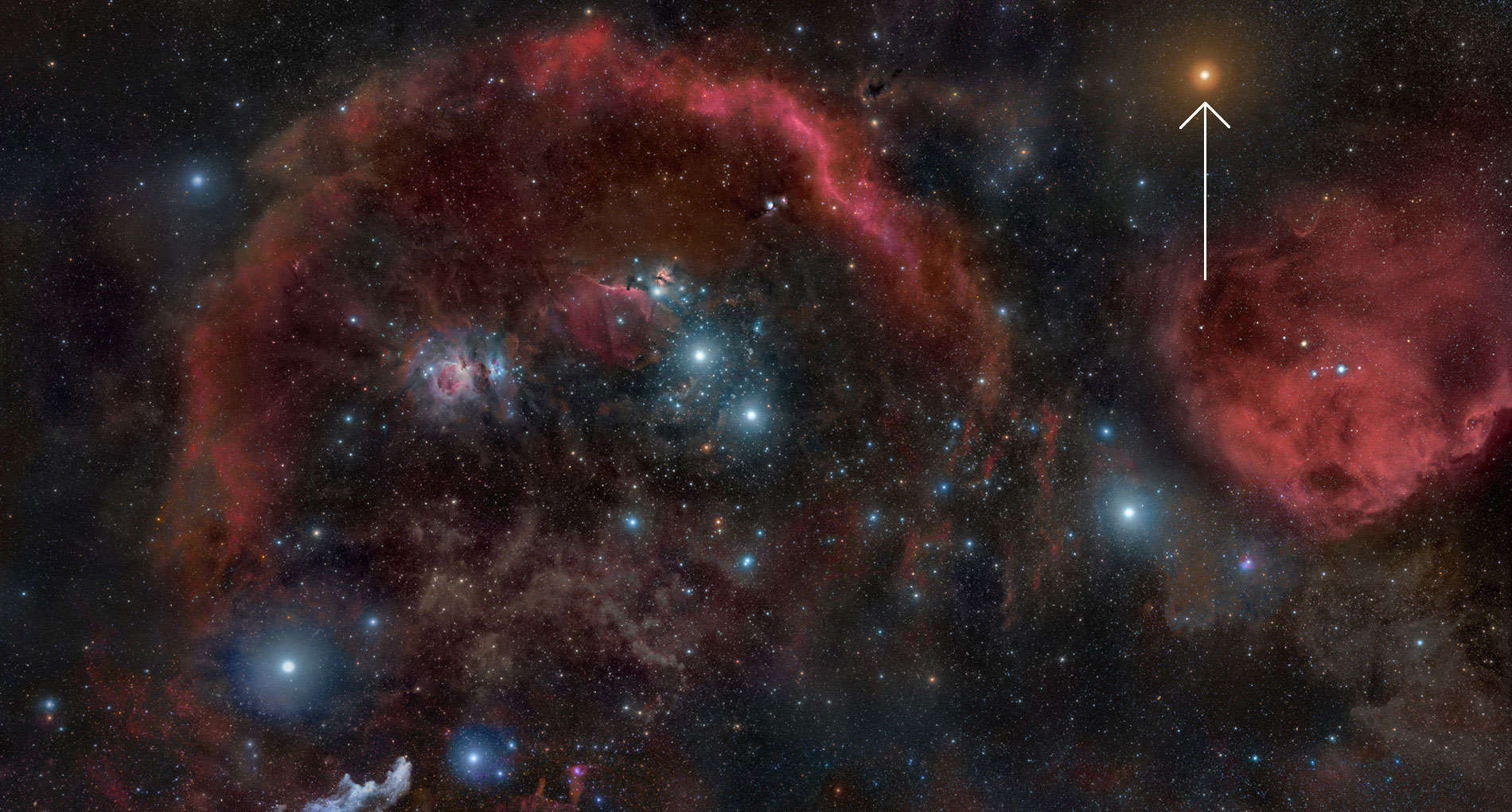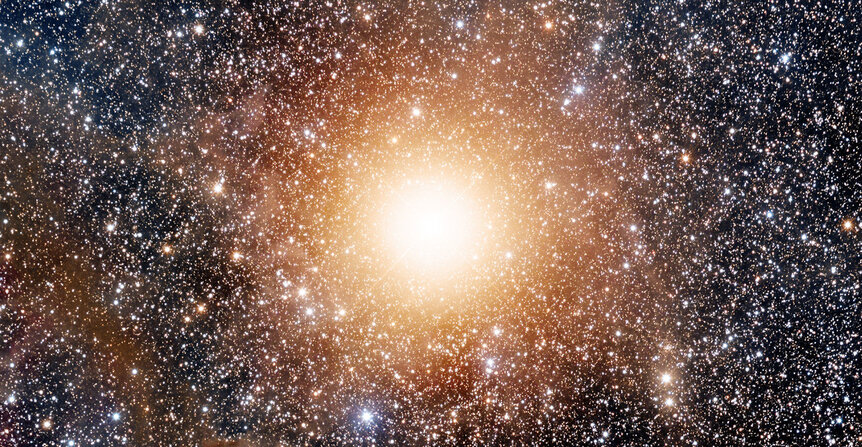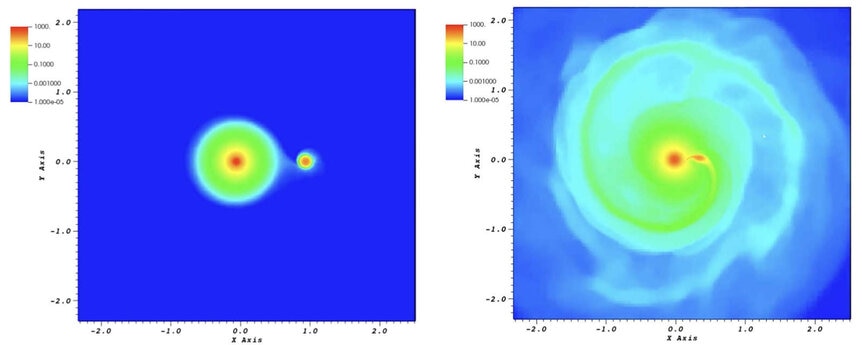Create a free profile to get unlimited access to exclusive videos, sweepstakes, and more!
Did Betelgeuse eat another star?

A new study just published shows that, within the past few hundred thousand years, it’s entirely possible that Betelgeuse ate and digested a whole other star.
This would explain at least one weird thing about it, and we know such stellar mergers can happen, so why not? It’s the least strange thing I’ve heard about Betelgeuse in the past couple of years anyway.
Betelgeuse is a red supergiant, a massive (roughly 15 times the Sun’s mass) star that’s nearing the end of its short life. Stars like this live for only some millions of years, and Betelgeuse is already about 8–10 million years old, so it doesn’t have much time left. It’s already run out of hydrogen in its core to fuse to helium, and is likely fusing helium into carbon, with a thin shell of hydrogen fusing outside of that. This produces prodigious amounts of energy, and the outer layers have reacted to that by swelling hugely (like a hot air balloon getting an infusion of heat); Betelgeuse is well over a billion kilometers in diameter.
Stars like this should rotate extremely slowly. It probably didn’t spin very quickly when it was younger and still fusing hydrogen into helium (we call these main sequence stars), and when it expanded into a supergiant it should spin even more slowly — if you take a spinning object and increase its diameter it’ll slow its spin, the same (though opposite) effect as when an ice skater starts a spin and brings their arms in to increase their spin.
But here’s the weird thing: Betelgeuse spins rapidly. At its equator it rotates at a speed of about 5 kilometers per second, over four times faster than the Sun does. Betelgeuse is huge, so it still takes decades to rotate once, but that equatorial speed is still anomalously high. It should be more like a few meters per second at most.
The new study looked into a possible answer: a binary merger, where Betelgeuse used to be two stars orbiting each other closely, but merged to form a single star.
This happens a lot. First of all, binary stars are pretty common; half of all stars are in a binary system. Some fraction of those are relatively close together, so they orbit each other relatively quickly. And some fraction of those involve a high-mass star and a lower mass one. That’s the key.
If the more massive star (called the primary star) is more than about 15 times the Sun's mass it’ll evolve quickly, using up its core hydrogen and evolving off the main sequence, expanding into a red supergiant. If another star orbits it, the primary could swell up so much it engulfs the smaller, secondary star — that star will literally be inside the primary. As it orbits, it’ll feel drag from plowing through the primary’s atmosphere, just like when you stick your hand out a moving car’s window and you feel air resistance.
That drag will steal energy from the secondary star’s orbital energy, and it’ll start to spiral down towards the primary’s core. The orbital energy of the secondary gets transferred to the primary’s atmosphere, spinning it up like an eggbeater in a bowl of eggs, and the primary will start to rotate faster.
In some cases that in-spiral may take only five days (!!), or it could take a few thousand years. Either way it happens very quickly compared to the lifetime of either star. As the secondary drops down the gravity of the primary’s dense core will start to tear the secondary star apart through tidal forces. Eventually the star is disrupted completely. The hydrogen in the ex-secondary then streams down to the primary’s core, where it can be used as fuel, increasing the star’s energy output and causing it to swell further.
This is what the new study found! They ran some simulations of massive primary stars (from 15 to 17 times the Sun’s mass) orbited by a smaller star (from 1–4 times the Sun’s mass) to see how the systems evolve. They found that in many cases they can reproduce Betelgeuse’s rapid rotation, and that it will continue to rotate rapidly like this for hundreds of thousands of years.
Given that Betelgeuse will probably go supernova in 100,000 years, that timescale sounds about right. So if Betelgeuse did start out as a binary, it likely ate its companion just a couple of hundred thousand years ago. If you think Betelgeuse is acting strangely now, imagine how it must have looked back then!
It also makes me wonder. Betelgeuse pulsates, brightening and dimming on a 420-day cycle. This is an upper atmospheric issue (the core is probably not the cause) and I wonder if dropping an entire star into it might have something to do with starting this cycle in the first place. I don’t think this would have much to do with the recent extraordinary dimming of Betelgeuse directly, though. We’ve seen it go through lots of normal variations before, so this most recent one probably has other (still not entirely understood) causes.
The scientists in the study are working on more complete models of what happens when the binary merger occurs, so it’ll be interesting to see what they find. It makes me wonder how many other stars we see in the sky have done this. It’s funny to think that stars we see and are familiar with may have such auto-gormandizing histories… and makes it clear there’s still much to learn and understand about Betelgeuse.
Tip o' the dew shield to AstroBites.
















